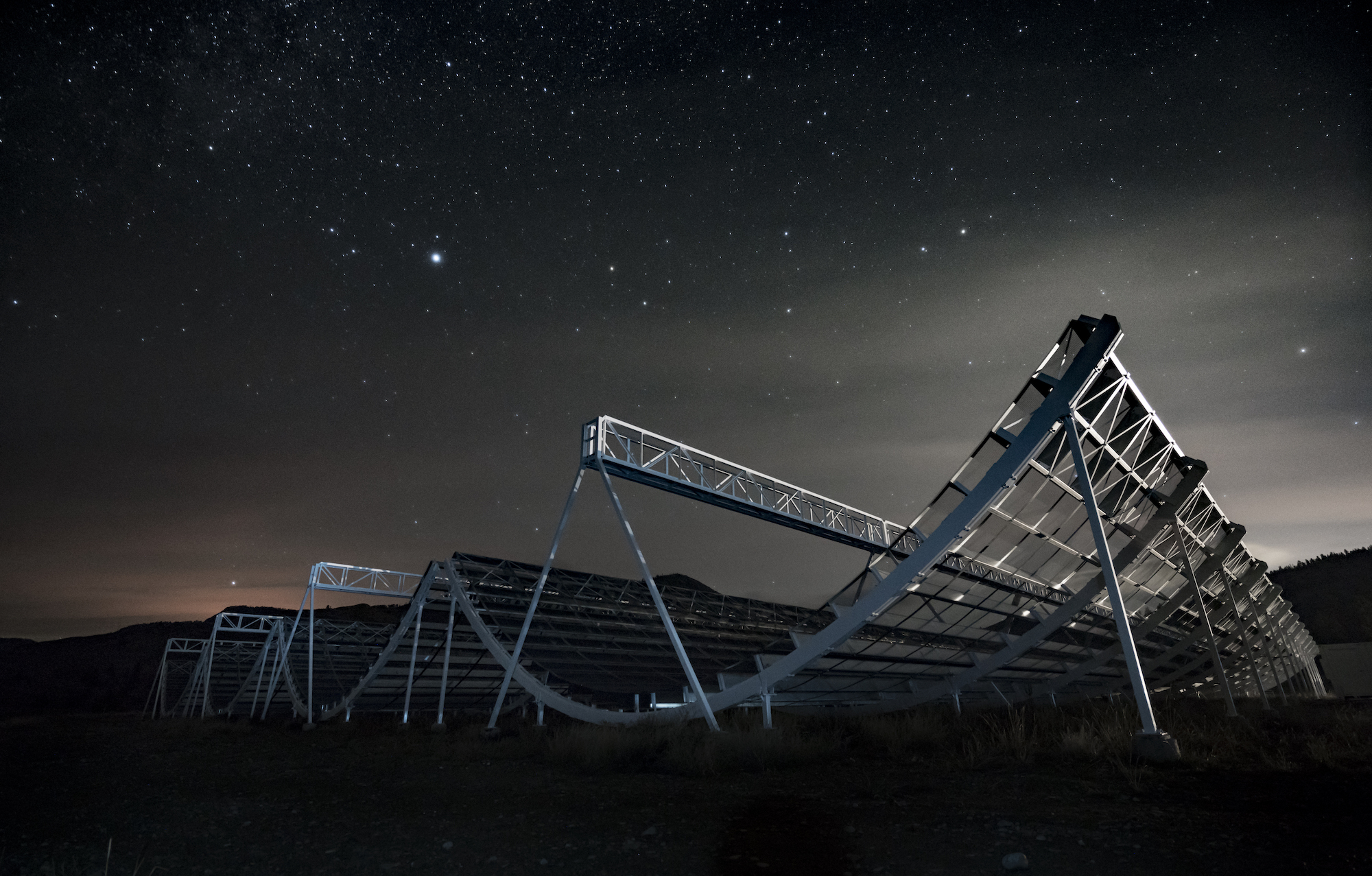Astronomers double the number of repeating cosmic probes
April 26, 2023

April 26, 2023

A Canadian-led research team has doubled the number of repeating fast radio bursts, adding 25 new ‘cosmic probes’.
Fast radio bursts (FRBs) are cosmic radio signals: extremely short, energetic pulses of radio emission emanating from space. They’re an astronomical mystery, as scientists aren’t sure exactly what causes them and where they come from.
And while astronomers have identified more than 500 FRBs to date, only 25 were observed to repeat – until now. The new research by the Canadian Hydrogen Intensity Mapping Experiment (CHIME)/FRB collaboration, which includes UBC researchers, adds a further 25 repeating FRBs to the list, and suggests we may just not have been watching FRBs for long enough. Of the repeating FRBs the collaboration observed from 2019 to 2021, some had just two bursts while others had as many as 12. "Many apparently one-off FRBs have simply not yet been observed long enough for a second burst from the source to be detected,” said corresponding author Dr. Ziggy Pleunis (he/him), a Dunlap postdoctoral fellow at the Dunlap Institute for Astronomy and Astrophysics.
Astronomers do know that FRBs come from far outside of the Milky Way. They are likely to be the dense cores of once-massive, exploded stars with strong magnetic fields. Because repeating FRBs have different characteristics than FRBs not observed to repeat, including the range of frequencies emitted, astronomers thought they may have different origins.
Finding more repeating sources is key to answering this question.
The research published today in The Astrophysical Journal provides 25 new sources for study. Astronomers can use FRBs as cosmic probes to measure various properties of the universe. “One exciting avenue of research is utilizing them to measure the amount of matter between galaxies, or the intergalactic medium,” said co-author Adam Dong (he/him), a doctoral student in the UBC department of physics and astronomy (PHAS).
The group calculated the fraction of FRBs that repeat and found it was about two per cent. This could mean repeating FRBs are rare, or just have long intervals between bursts, Dong said. “We need a longer observation time because some repeaters could repeat every 10 years. We just don’t know. They don’t play by our time scales.”
Repeating FRBs allow observation of the same source with other telescopes in more detail, as well as more information about the diversity of emission a source can produce. “FRBs that repeat are great targets for other telescopes, including those that can measure their positions very accurately, and let us know which galaxies they come from,” says co-author Dr. Ingrid Stairs (she/her), PHAS professor. “In the long run, we hope to learn a lot about their origins.”
This is the first time the CHIME team have combed through the data to find every repeating source detected so far. To make this happen, they developed a new set of statistical tools. Dong’s work involved clustering FRBs that are close to one another, observed over two years, which was then used to ascertain if the signals were likely to be from the same source.
CHIME, located near the UBC Okanagan campus, has the capacity to scan the entire northern sky every day. “Because it sees from horizon to horizon at any given moment, CHIME is far better than any other telescope at finding FRBs even when we don’t know in advance where or when they’ll go off,” says co-author Dr. Alex Hill (he/him), assistant professor of physics at UBCO.
The team highlighted 14 further sources which they say are promising repeating FRB candidates. Also of interest was a measured difference between non-repeating and repeating FRBs’ dispersion measures, which could mean the two are indeed from different sources, or merely from observational effects, the authors say.
We honour xwməθkwəy̓ əm (Musqueam) on whose ancestral, unceded territory UBC Vancouver is situated. UBC Science is committed to building meaningful relationships with Indigenous peoples so we can advance Reconciliation and ensure traditional ways of knowing enrich our teaching and research.
Learn more: Musqueam First Nation